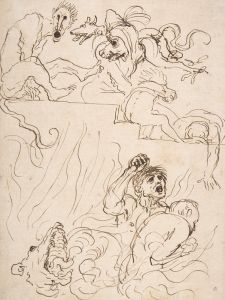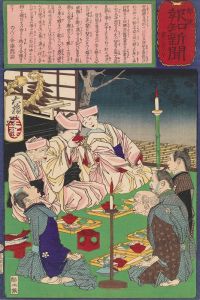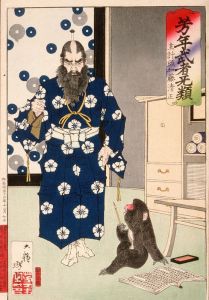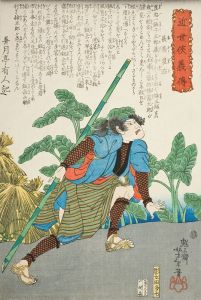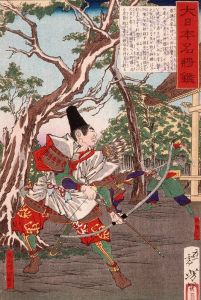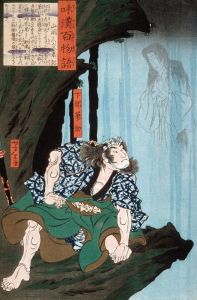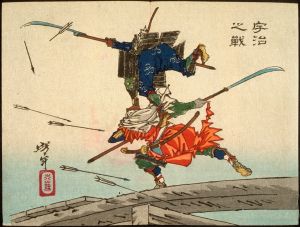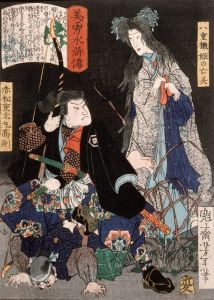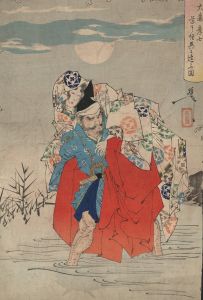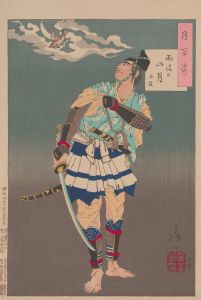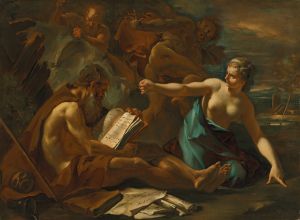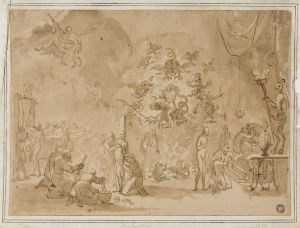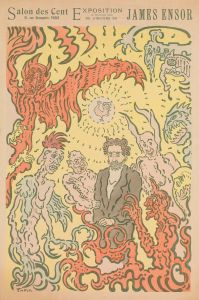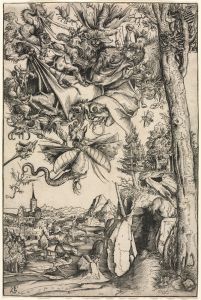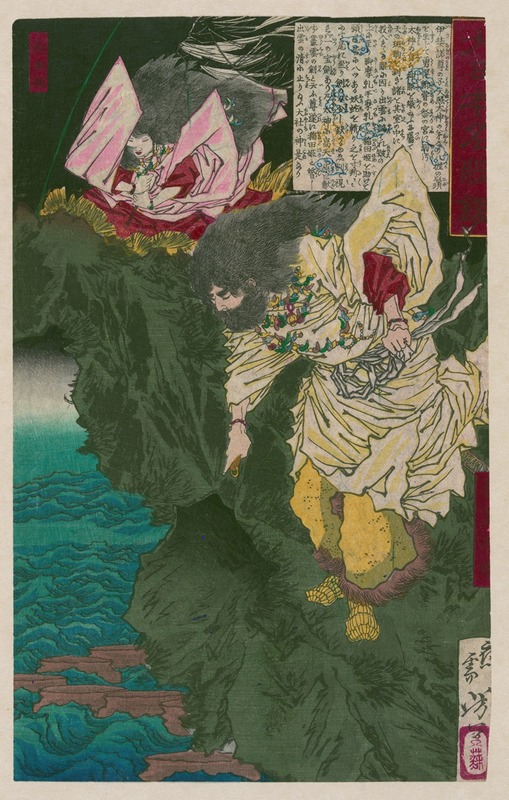
Susanō no mikoto
A hand-painted replica of Tsukioka Yoshitoshi’s masterpiece Susanō no mikoto, meticulously crafted by professional artists to capture the true essence of the original. Each piece is created with museum-quality canvas and rare mineral pigments, carefully painted by experienced artists with delicate brushstrokes and rich, layered colors to perfectly recreate the texture of the original artwork. Unlike machine-printed reproductions, this hand-painted version brings the painting to life, infused with the artist’s emotions and skill in every stroke. Whether for personal collection or home decoration, it instantly elevates the artistic atmosphere of any space.
Tsukioka Yoshitoshi (1839–1892) was a renowned Japanese artist known for his woodblock prints in the ukiyo-e style. One of his notable works is "Susanō no mikoto," which depicts the Shinto god Susanoo, a prominent deity in Japanese mythology. Susanoo is known for his tempestuous nature and his role in various mythological tales, including his famous battle with the eight-headed serpent Yamata no Orochi.
Yoshitoshi's depiction of Susanoo captures the dramatic and dynamic essence of the deity. The artwork is a part of Yoshitoshi's series "Tsuki hyakushi" (One Hundred Aspects of the Moon), which was published between 1885 and 1892. This series is celebrated for its intricate designs and the way it incorporates elements of traditional Japanese folklore, history, and literature, all unified by the common theme of the moon.
In "Susanō no mikoto," Yoshitoshi illustrates Susanoo in a powerful stance, often shown wielding a sword, which is a reference to the legendary sword Kusanagi-no-Tsurugi. This sword was discovered in the tail of Yamata no Orochi after Susanoo defeated the serpent, and it later became one of the three Imperial Regalia of Japan. The print showcases Yoshitoshi's skill in capturing movement and emotion, as well as his ability to convey the supernatural and heroic qualities of his subjects.
Yoshitoshi's work is characterized by its bold lines, vibrant colors, and attention to detail. His prints often reflect a deep understanding of the human condition, as well as a fascination with the supernatural and the macabre. "Susanō no mikoto" is no exception, as it combines these elements to create a compelling portrayal of one of Japan's most revered deities.
The "Tsuki hyakushi" series, including "Susanō no mikoto," was produced during a time of great change in Japan, as the country was transitioning from the Edo period to the Meiji era. This period saw significant social, political, and cultural shifts, and Yoshitoshi's work reflects both a reverence for traditional Japanese themes and an adaptation to the new influences of the time.
Yoshitoshi's legacy as an artist is significant, as he is often credited with revitalizing the ukiyo-e genre during its decline in the late 19th century. His innovative approach and masterful technique have left a lasting impact on the world of Japanese art. "Susanō no mikoto" remains a testament to his ability to blend mythological themes with artistic expression, creating works that continue to be admired for their beauty and historical significance.
In summary, "Susanō no mikoto" by Tsukioka Yoshitoshi is a woodblock print that captures the essence of the Shinto god Susanoo. It is part of the "Tsuki hyakushi" series, which showcases Yoshitoshi's talent in depicting traditional Japanese folklore with a unique and dynamic style. This artwork is a reflection of Yoshitoshi's contribution to the ukiyo-e genre and his ability to convey powerful narratives through his prints.





